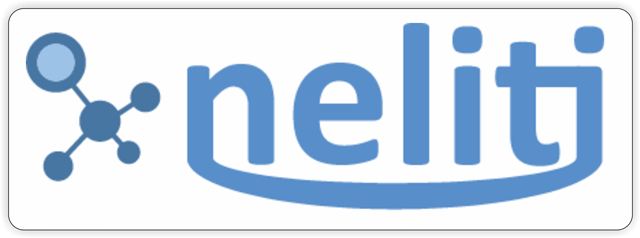TEACHER'S READINESS IN TEACHING ENGLISH USING DIGITAL TECHNOLOGY IN SENIOR HIGH SCHOOL MAMUJU
(1) Universitas Negeri Makassar
(2) Universitas Negeri Makassar
(3) Universitas Negeri Makassar
(*) Corresponding Author
Abstract
The purpose of this study was to determine the readiness of teachers to use digital technology in teaching English. This research is mixed research (quantitative and qualitative) using the explanatory sequential method. The researchers chose 3 Senior High Schools in Mamuju namely, SMAN 1 Mamuju, SMAN 2 Mamuju, and SMAN 3 Mamuju. Data collection techniques used questionnaires and interviews. This study shows that the readiness of digital technology in teaching English is very ready, which can be seen from the three aspects of readiness: emotive attitudinal Readiness, cognitive Readiness, and behavioral Readiness supported by teacher understanding, teacher enthusiasm for using digital technology in teaching, teacher skills, and the availability of media tools. Therefore, the understanding and competence possessed by a teacher about digital technology can be integrated with learning and teaching.
Keywords
Full Text:
PDFReferences
Angers, J., & Machtmes, K. (2005). An ethnographic case study of beliefs, contact factors, and practices of teachers integrating technology. The Qualitative Repor, 10(4), 771-794.
Biesta, G. (2013). Receiving the gift of teaching: From learning from to being taught. Stud. Philos. Educ, 32, 449-461.
Bilyalova, A. (2017). ICT in Teaching a foreign language in High School. Procedia - Social and Behavioral Sciences, 237(June 2016), 175-181.
Bransford, J. D., Brown, A. L., & Cooking, R. R. (2000). How people learn: Brain, mind, experience, and school. National Academy Press.
Carlson, S., & Gadio, C.T. (2003). Teacher professional development in the use of technology. [Online]. Technologies for Education. Retrieved from www.TechKnowLogia.org.
Cavas, B., Cavas, P., Karaoglan, B., & Kalsa, T. (2009). A study on science teachers' attitudes toward information and communication technologies in education. The Turkish Online Journal of Educational Technology, 8(2), 34-67.
Champa, R.A., Rochsantiningsih, D., & Kristian, D. (2019). Teacher readiness indicators on ICT integration into their teaching. BirLE - Journal, 2(4), 195-203. doi: https://doi.org/10.33258/birle.v2i4.508
Cutajar, Maria. (2019). Teaching using digital technologies: Transmission or Participation? Education Science, 2-13. doi:10.3390/music/9030226
D'Silva, J.L., Rose, R.C., & Kumar, N. (2008). Teachers' readiness to use technology in the classroom: An Empirical Study. European Journal of Scientific Research, 21(4), 603-616. Retrieved from http://www.eurojournals.com/ejsr.htm
Gourlay, L., & Oliver, M. (2018). Student engagement in the Digital University; Routledge.
Hossain, M.A., Salam, M.A., Shilpi, F., & Officer, A.D. (2016). Readiness and challenges of using information and communications technology (ICT) in higher education in Bangladesh. The online journal of New Horizons in Education, 6(1), 123-132.
Jenkins, H., Ito, M., & Boyd, D. (2016). Participatory Culture in a Networked Era: A Conversation on Youth, Learning, commerce, and politics, polity.
Jonassen, D. (1995). Supporting communities of learners with technology: A vision for integrating technology with learning in schools. Educational Technology, 35(4), 60-63.
Krysa, R. (n.d.). Factors affecting the adoption and use of computer technology in schools. Retrieved from http://www.usask.ca/education/krysa
Mehlinger, H. D., & Powers, S. M. (2002). Technology and Teacher Education: A guide for educators and policymakers. Houghton Mifflin Company.
Mehlinger, H.D., & Powers, S. M. (2000). How people learn: Brain, mind, experience, and school. National Academy Press.
Mishra, P., & Koehler, M. J. (2008). Introducing technological pedagogical content knowledge. In annual meeting of the American Educational Research Association, 1-16.
Nasruddin. (n.d.). The importance of using technology in English teaching and learning. STAIN Palopo.
North Central Regional Educational Laboratory. (2002). Breaking down the digital walls: Learning to teach in a post-modern world. Educational Technology. Retrieved from www.ncrel.org/sdrs/areas/issues/methods/tecnogy/te1000.
Article Metrics
Abstract view : 497 times | PDF view : 92 timesRefbacks
- There are currently no refbacks.
Copyright (c) 2022 Aulia Mutmainna Bachtiar, Nurdin Noni, Maemuna Muhayyang

This work is licensed under a Creative Commons Attribution-ShareAlike 4.0 International License.
Editorial Office
Journal of Technology in Language Pedagogy (JTechLP)
Faculty of Languages and Literature Universitas Negeri Makassar
| Jalan Malengkeri Raya, Makassar, 90224 Kampus UNM Parangtambung, Indonesia | ||||
| jtechlp@unm.ac.id | |||||
| https://ojs.unm.ac.id/JTechLP/index | |||||
| 085299332119 (Chief Editor) | |||||
JTechLP is Indexed by Google Scholar, Garuda and Cross Reference
Address: Department of English Language Office, DC Building, UNM Parangtambung Campus, Daeng Tata Raya Street, Makassar, South Sulawesi, Indonesia





































